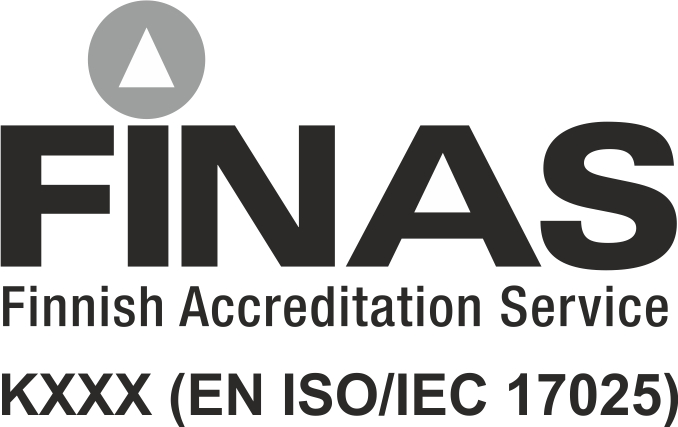According to the definition, calibration refers to procedures with which a connection can be established between the results of a measuring instrument or a measuring system, or the measurement unit value represented by a material measure or reference material under specified circumstances and the corresponding values implemented with measurement standards.
Calibration is a procedure that must be performed at regular intervals. It verifies the working condition of the measuring instrument, while confirming that the laboratory is aware how much “error" there is in the measuring instrument's reading. In other words, calibration is a part of the process of confirming the validity of the results. It is between the client and the laboratory to agree whether adjusting the measuring instrument to show the correct reading is a part of the assignment.
The task of accredited calibration laboratories is to transfer traceability, i.e. to indicate the connection of the measurement result or the measurement standard used by the client and the references (usually national or international measurement standards) with the help of an unbroken chain of comparisons in which all uncertainties of comparisons in the chain have been indicated. Measurement uncertainty is a parameter relating to the measuring result that describes the assumed variation of the measured quantity. The size of the measurement uncertainty influences the result's approval limits and is influenced by, for example, the measuring target, measuring instrument, person performing the measurement, measuring method and environmental conditions at the time when the measurement is taken.
Accredited calibration laboratories calibrate measuring devices relating to many parameters, including various electrical parameters, pressure, temperature, length, volume, mass, power and hardness.
The quality management system of an accredited calibration laboratory complies with the principles of ISO 9001. The international organisations ISO, ILAC and IAF have stated this compliance in their joint resolution (download pdf).
The significance and importance of the metrological traceability of calibrations has been recognised in the international resolution (download pdf). The resolution's message is that the comparability and acceptability of measurement results can only be verified by metrological traceability of the measurement results with internationally recognised references. The international metrology, accreditation and standardisation organisations BIPM, OIML, ILAC and ISO have signed the resolution.
Requirements and guidelines (updated 4th of April 2024)
The accreditation requirements for calibration laboratories:
SFS-EN ISO/IEC 17025:2017 General requirements for the competence of testing and calibration laboratories
Mandatory guidelines relating to accreditation of calibration laboratories:
Guidelines relating to calibration laboratories
Examples of guidelines for calibration laboratories are given below. The list does not necessarily cover all guidelines prepared for the accredited activities. EURAMET e.V. (European Association of National Metrology Institutes) also publishes guidelines relating to calibration activities.
Publications of FINAS that support the activity of calibration laboratories
Accreditation symbol
Accredited bodies are entitled to use the FINAS accreditation symbol, which consists of the FINAS logo, the accredited body's identification number and the accreditation requirement. The FINAS accreditation symbol must be used when the accredited body refers to the accreditation in its reports, for example.
Accredited calibration laboratories use an identifier in which the identification number of the accredited body is of the format KXXX.
